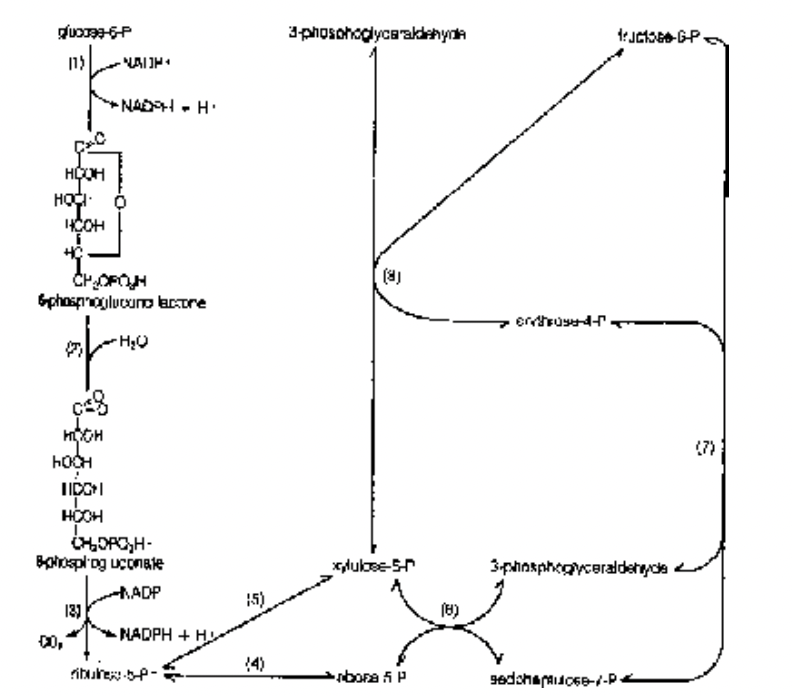Hexose Monophosphate Shunt
Cellular Respiration of Class 11
Hexose Monophosphate Shunt
It is also called Hexose Monophosphate Pathway (HMP) or Pentose Phosphate Pathway (PPP) or direct oxidation pathway or oxidative phosphate pathway or Warburg-Dickens pathway. It was discovered by Warburg and Dickens (1938). It is found in the cytoplasm of both prokaryotes and eukaryotes as an alternate method pathway or oxidative phosphate pathway, hence called shunt of glycolysis. In liver and adrenal cortex, RBC, lactating mammary gland and adipose tissue, it accounts for 60% of total respiration. It occurs when concentration of NADP is more. This pathway is resistant to cyanide.
First of all 6 molecules of glucose get phosphorylated into 6 molecules of glucose 6-PO4. Glucose 6-PO4 acts substrate of this pathway. 5 molecules are regenerated and remaining one molecule is oxidised completely. Total 12 NADPH + H+ and 6 CO2 are formed. 12 NADPH produces 36 ATP through ETS. 1 ATP is consumed in the phosphorylation of glucose. So net gain of ATP is 35.
ED Pathway (Entner - Duodoroff Pathway). It is a pathway of cellular respiration, and is found in Prokaryotes only (like Pseudomonas). Like HMP pathway it produces 35 ATP per one glucose molecule oxidation.

Fig. Hexose Monophosphate Shunt
Cyanide resistant pathway. Cyanide-resistant respiration seems to be widespread in higher plant tissues. Cyanide prevents flow of electron from cytochrome a3 to oxygen, so called ETC inhibitor. In these plant tissues resistance is due to, a branch point in the ETS preceeding the highly cyanide - sensitive cytochromes. The tissues lacking this branch point, or alternate pathway and blockage of cytochromes by cyanide, inhibits the electron flow.









